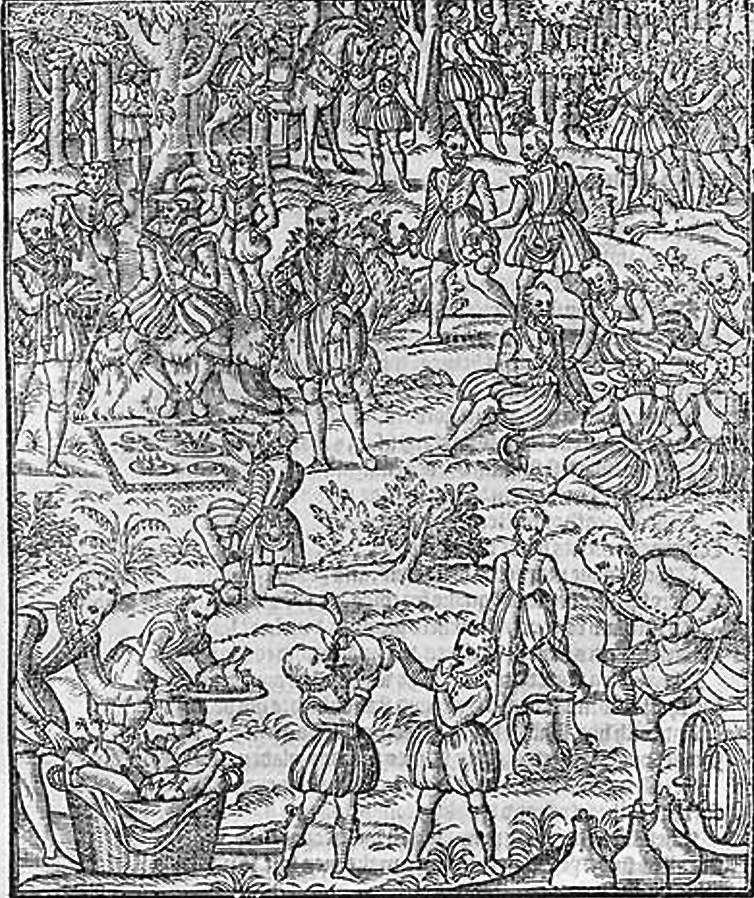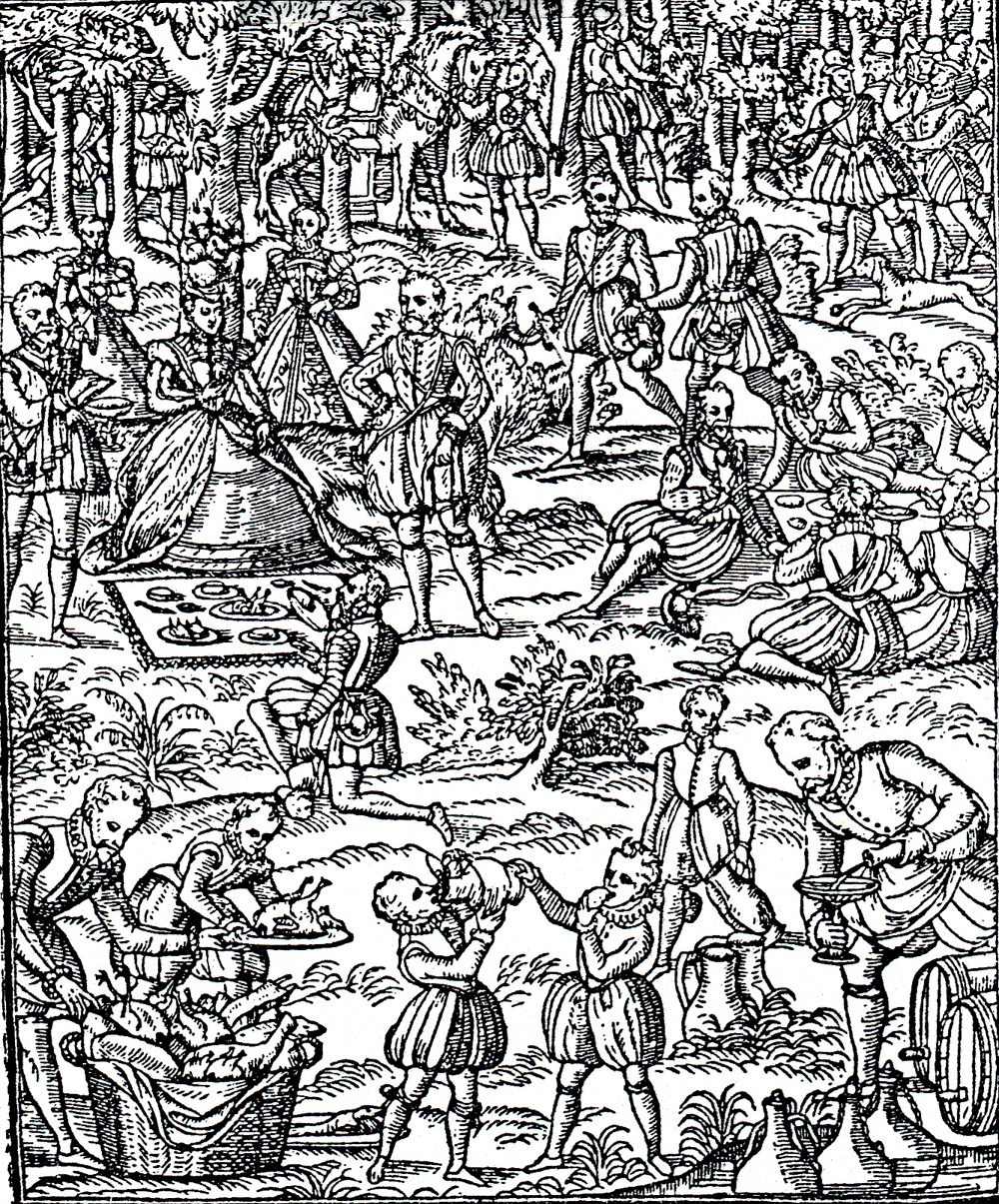Gascoigne adapted Gaston Phébus’s The Book of the Hunt (1380) and Jacques du Fouilloux’s in La Venerie (1560) into English, retitling the work The Noble Arte of Venerie or Hunting (1575). (The book is dedicated to Lord Clinton, Elizabeth’s master of Hart Hounds.)
Borrowing from Fouilloux’s illustration in La Venerie, Gascoigne depicted the hunters’ assemblée as a royal picnic where the hunters pay court to Elizabeth I, well-known as a hunter.
Unlike Gaston’s discussion of the day’s hunting prospect, this is a repas de chasse, a break from the hunt devoted to a luncheon meal. Brillat-Savarin would later describe it as a meal comparable to any dining room.
This is more than a lunch; it’s a feast. Elizabeth sits before a cloth filled with a great basket of cooked fowls, two casks of wine and “dainty drinks,” sherry or other fortified wines, and many kilderkins, firkins, and bottles for serving. The man kneeling before Elizabeth may be Gascoigne, a nice touch for a man seeking royal patronage. Expecting the picnickers to get drunk and rowdy, Gascoigne suggests that a doctor be present and a good supply of medicines and whatnot to “counterpoise all quarrels.”
Eight years after Elizabeth’s death, James I is now the chief picnicker for the 1611 edition of The Noble Art of Venerie or Hunting.
Sometimes The Noble Art is wrongly attributed to George Tuberville, who plagiarized the text in 1576 and dedicated it to Gascoigne. The matter is discussed definitively by Stephen Hamrick. “Set in portraiture: George Gascoigne, Queen Elizabeth, and Adapting the Royal Image,” Early Modern Literary Studies (May 2005).
Featured Image: George Gascoigne. “Of the place where and how an assembly should be made, in the preference of a Prince, or some honourable person,” The Noble Art of Venerie or Hunting [aka The Booke of Hunting] (1575), woodcut on paper. http://www.themorgan.org/collections/swf/pageEnlarge.asp?id=849
See George Gascoigne. “King James I at a Hunting Party,” The Noble Art of Venerie or Hunting aka The Booke of Hunting] (London: Printed by Thomas Purfoot, 1611). Bequest of Julia P. Wightman, 1994. PML 150046. Morgan Library and Museum, New York; Gillian Austen George Gascoigne. D.S Brewere. Cambridge 2008
Sometimes The Noble Art is wrongly attributed to George Tuberville, who plagiarized the text in 1576 and dedicated it to Gascoigne. The matter is discussed definitively by Stephen Hamrick. “Set in portraiture: George Gascoigne, Queen Elizabeth, and Adapting the Royal Image,” Early Modern Literary Studies (May 2005).
Featured Image: George Gascoigne. “Of the place where and how an assembly should be made, in the preference of a Prince, or some honourable person,” The Noble Art of Venerie or Hunting [aka The Booke of Hunting] (1575), woodcut on paper. http://www.themorgan.org/collections/swf/pageEnlarge.asp?id=849
See George Gascoigne. “King James I at a Hunting Party,” The Noble Art of Venerie or Hunting aka The Booke of Hunting] (London: Printed by Thomas Purfoot, 1611). Bequest of Julia P. Wightman, 1994. PML 150046. Morgan Library and Museum, New York; Gillian Austen George Gascoigne. D.S Brewere. Cambridge 2008

